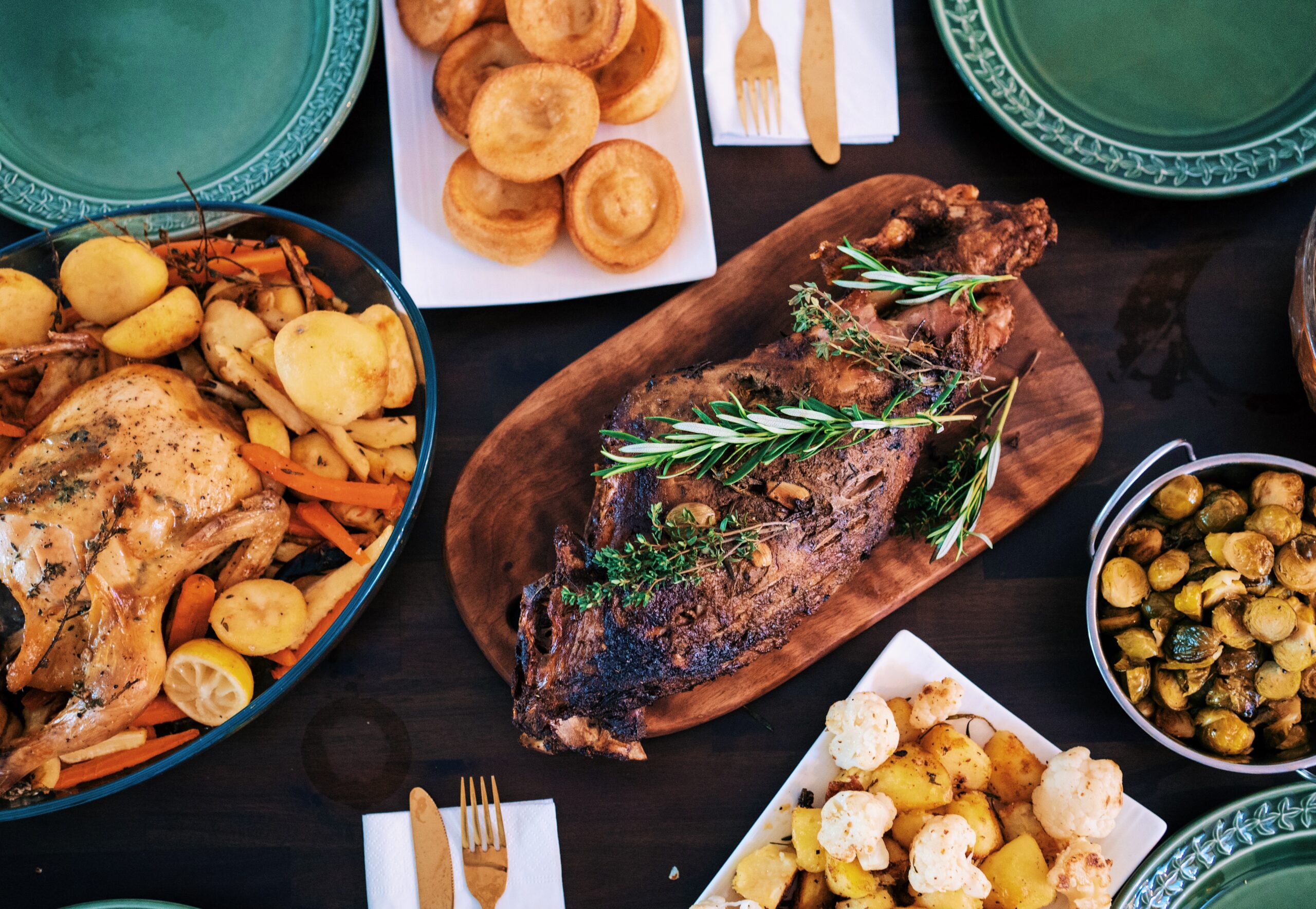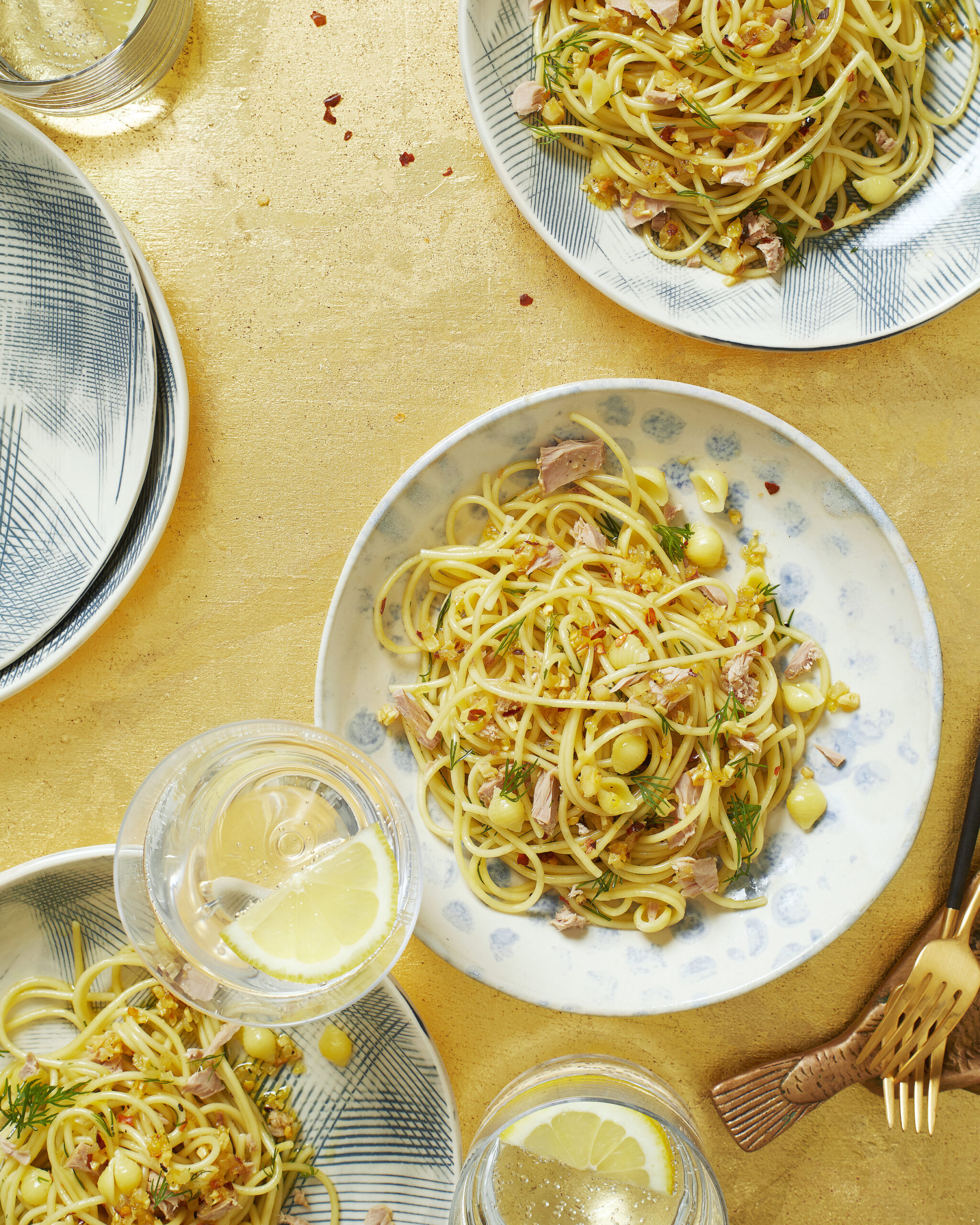It’s not the holidays without flowing punch bowls and heaping platters of treats. Unfortunately these festive indulgences can lead to unintended consequences: food gets uneaten, forgotten, and goes to waste. It doesn’t have to be this way. Here are some handy tips, tricks and hacks to minimize food waste this holiday season.
1: First In, First Out
One of the biggest mantras in the restaurant business is “first in, first out” aka FIFO. It means use up older foods before you dig into the new. So before heading out for the big holiday shop, take a few minutes to look in your fridge, freezer and pantry. Figure out what you can make or bake with what’s already on hand then write up your holiday shopping list. You will probably find a wide range of foods begging to be used up. This is not to say you shouldn’t buy your usual seasonal standbys and special treats, but it will help curb overshopping – a major contributor to food waste at home.
Food 911: Make a list and stick to it. And don’t go grocery shopping when you’re hungry!
2: Plan Your Portions
When in doubt, plan it out. Guessing how much to buy and cook for a holiday gathering can be daunting, but it goes a long way to reducing food waste. Use these tips and handy chart to help.
- For guaranteed crowd pleasers—looking at you, shrimp ring!—guess on the high side.
- With more variety on the table, plan smaller portions per person. On the flipside, less choice means larger portions.
- It’s always safe to round up estimates, as some leftovers are always welcome.
- Check out my Zero Waste Kitchen Portion Planning Solved.
Family-Style Saves Food: When guests serve themselves, they choose exactly what and how much they want to eat. It means less food will get scraped into the bin.
4: Buy Food Not Packaging
Avoiding food with extra packaging is a win-win situation. Not only do you reduce the amount of packaging filling up your garbage and recycling bins, you can buy the exact amount of food you need, which helps reduce food waste. So instead of a big bag of apples, buy the five you’ll eat that week. And don’t be tempted by the giant pail of feta on sale; buy the four ounces you need for your salad.
BONUS: Bringing a selection of reusable bags and containers will help avoid unnecessary packaging. More and more bulk food stores and local grocers will let you bring in your own containers and you can find a huge selection of reusable produce bags online these days.
5: Seeing is Believing
If you can’t see those tasty leftovers or chopped pineapple in the fridge, the container will likely end up languishing in the back, lost and forgotten. By the time you peel back the lid, it will only be fit for the green bin. Invest in durable, see-through, reusable and dishwasher-safe storage containers, so the lovely fruit salad you made will call out every time you open the fridge. Tempered glass containers and reusable silicon storage bags are a great choice, and you can also buy stretchy silicon lids that fit overtop glass bowls or jars, which you may already have on hand.
6: Mash It
Got distracted by your phone and overcooked the carrots? Don’t dispair. In a classic lemons to limoncello move, mushy vegetables can be transformed into a tasty purée for an elegant side dish or smooth dip. Try it a root purée, which can also be made with any wrinkled potatoes or limp carrots you might have around.
7: Save Your Scraps
Everyday we trim and discard food scraps that still have something left to give. From celery stumps, to baguette ends, to chicken wing tips, these items have flavour and nutrients we can utilize. So before you toss out any food items, imagine other ways to use them up. A rock-hard Parmesan rind will add a hit of cheesy umami to vegetable soups, and stale bread can be turned into breadcrumbs or croutons. One recipe that can be made from scraps is vegetable stock. Stockpile fennel tops, herbs stems, onion cores and other clean vegetable trimmings in a reusable bag in the freezer. When the bag is full, you’re ready to make free vegetable stock! Note: Avoid trimmings from bitter vegetables such as rapini or strongly coloured veg such as beets and red cabbage.
BONUS: Certain vegetables have protective outer layers which are just as nutritious as their interiors. Save antioxidant-rich onion skins to add colour, flavour and nutrients to stocks and braises.
8: Liquid Gold
Big holiday roasts can leave you with an excess of leftover meat. Whether it’s turkey, pork or beef, don’t just wrap them and toss in the freezer. Lean cuts of protein are prone to drying out and freezer burn. To maximize the flavour and maintain the integrity of these valuable leftovers, store them in a freezer-safe container or bag in a flavorful bath of stock, sauce or gravy. The liquid protects the meat and keeps it from drying out. Label with the date and freeze up to 3 months.
Beverage Waste Hacks
- Stuck with open bottles of wine or beer? Portion it out in small containers or ice cube trays and freeze for soups, sauces and braises.
- Leftover bubbly has lost its sparkle? It’s still excellent to for cooking, from a splash in risotto to a base for poaching pears.
- Have a few bald oranges from a night of Negronis? Juice them the next day for a morning of Mimosas!
9: Baking Hacks
Here are a few simple ideas to minimize waste during your holiday baking session.
- Save butter wrappers in fridge to grease pans.
- Freeze egg whites for other delicious treats including meringues and financiers.
- Extend the shelflife of nuts and seeds by storing them in the freezer for up to 1 year.
- Wrap and freeze puff pastry scraps from making pot pies and beef Wellington for scrumptious Leftover Cheese Board Palmiers.
10: Peeling is Overrated
Not only does eating the peels of fruit and vegetables save prep time, it adds fiber and nutrients to your diet. In the case of apples, they are far more nutritious eaten with the peel than without. Roast squash wedges in their skins for a more appealing presentation—pun intended—and once you roast unpeeled carrots there’s no going back – the flavour difference is revelatory. Skins can even benefit a recipe without being in the dish. For the fluffiest mashed potatoes, boil or bake potatoes with their skins on, which protects the insides from getting water-logged and allows the potatoes to soak up more buttery goodness.
BONUS: Traditional Recipe Hacks
Make those tried-and-true holiday favourites, while cutting down on waste.
- Save stale bread throughout the year in the freezer for stuffing.
- Add poultry giblets and necks to gravy.
- Use leftover coffee in a glaze for ham.
- Dig out any forgotten frozen fruit for holiday crisps, cobblers or pies.
- Clear out the baking pantry for a kitchen sink cookie.
- Bake up stale pastries, buns, and cake into a next-level bread pudding.
Waste free entertaining is so important. To learn other ways in which you can become a zero waste household, be sure to check out my other tips. As well, follow me on Instagram for exclusives.



